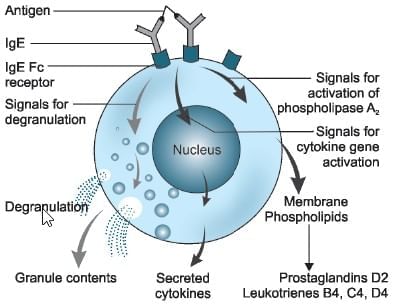Test: Inflammation- 3 - NEET PG MCQ
25 Questions MCQ Test - Test: Inflammation- 3
Cryoprecipitate is rich in which of the following clotting factors: (Delhi PG-2005)
Which of the following is found in secondary granules of neutrophils?
The estimation of the prothrombin level is useful in the following clotting factor deficiency, except: (UP 2006)
Which of the following is secondary mediator of the anaphylaxis is: (UP 2006)
In Lipooxygenase pathway of the arachidonic acid metabolism, which of the following products helps to promote the platelet aggregation and vasoconstriction?
A middle aged scientist Sudarshan is working in the laboratory onthemechanismsinvolvedin inflammation. He observes that the leucocytes leave the blood vessels and move towards the site of bacteria. Which of the following is likely to mediate this movement of the bacteria?
An 8 year old girl Geetu presents to the physician with wheezing and difficulty in breathing. The breathlessness increases when she went to the fieldsto play with her friends. Her blood contains higher than normal concentration of IgE. The physician believes that the cell shown in the photograph below is implicated in the pathogenesis of her condition. This cell is most similar to which of the following white blood cells?















